Since joining the University of Toronto Mississauga (UTM) in 2007, Professor Patrick Gunning has built an innovative program in medicinal chemistry with an emphasis on rare and orphan diseases
Adding to an already impressive list of awards, Gunning received the prestigious University of Toronto McLean Award in 2015, which recognizes emerging research leaders conducting basic research in the fields of physics, chemistry, computer science, mathematics, engineering sciences, and statistics. The award is made annually to a faculty member within 12 years of receipt of their PhD.
Gunning was also recently awarded the 2016 Bernard Belleau Award from the Chemical Institute of Canada. This award, sponsored by Vertex Pharmaceuticals, is presented to a scientist residing in Canada who has made a distinguished contribution to the field of medicinal chemistry through research involving biochemical or organic chemical mechanisms..
The focus of Gunning’s research program is on the development of small molecules that target proteins involved in signaling cascades that directly regulate cancer. By disrupting activated protein-protein complexes, Gunning and his team have been able to develop inhibitors that stop the cancer cell from growing, dividing, and proliferating. Two of these molecules have already been licensed and are in advanced preclinical trials for psoriasis, acute myeloid leukemia, and refractory medulloblastoma.
It’s exciting work for those whom his research promises to help. The cancer drugs will serve patients left with few options to fight lethal diseases, and the treatment being developed for psoriasis holds the promise of being the first non-steroid developed to treat this prolific condition in 25 years.
While the strategy that Gunning takes in developing these molecules – targeting protein-protein interactions – has been quite successful and is turning out real drug candidates, it is tough work. Protein-protein interactions are non-contiguous contact points that can span surfaces of 1000 Å, and it is no small feat to produce a drug-like molecule capable of interacting with such a large surface.
“Initially people thought it was impossible,” says Gunning. It’s now been shown, however, that it can be done by targeting hot spots, which are regions on the surface that contribute more to the interaction than the rest of the surface area. By targeting these hot spots, rather than the entire surface, they are still able to inhibit the interaction.
It’s these successes that drive Gunning and his team, a group that he’s quite happy to have set up at UTM. Hailing from Scotland, Gunning says he felt very much at home moving to Canada. Moreover, “the students here are fantastic,” says Gunning, “highly motivated and a pleasure to work with.”
His research program is driven by a diverse and multidisciplinary team of scientists, including cell biologists, analytical chemists, and synthetic organic chemists. “It makes for really interesting and dynamic group meetings,” says Gunning, “it's led to my synthetic chemists wanting to do cell biology and some of the cell biologists have wanted to try chemistry as well, so it's a real melting pot in terms of multidisciplinary research.”
The team does their own cell biology in house, and to this end Gunning has developed a high throughput facility where they’re able to assess all molecules in cancer cells within 5 days of their being made. Located within a single corridor at UTM, Gunning’s group does computational modeling, synthetic, organic, biophysical evaluation against the proteins and then cell biology validation in cancer cells.
This means that Gunning is able to actually see what is going on inside a cancer cell following introduction of a molecule all within his own labs. Gunning finds the work “hugely rewarding,” and says that it is the translational component of this research that drove his interest in medicinal chemistry.
Trained as a molecular recognition scientist at the University of Glasgow, it was while doing his postdoctoral work at Yale that Gunning began to work on developing small molecules to recognize proteins.
“Seeing the molecules I made kill cancer cells – it was just fantastic,” says Gunning, “So I actually changed my entire career. It was that cool to me.”


